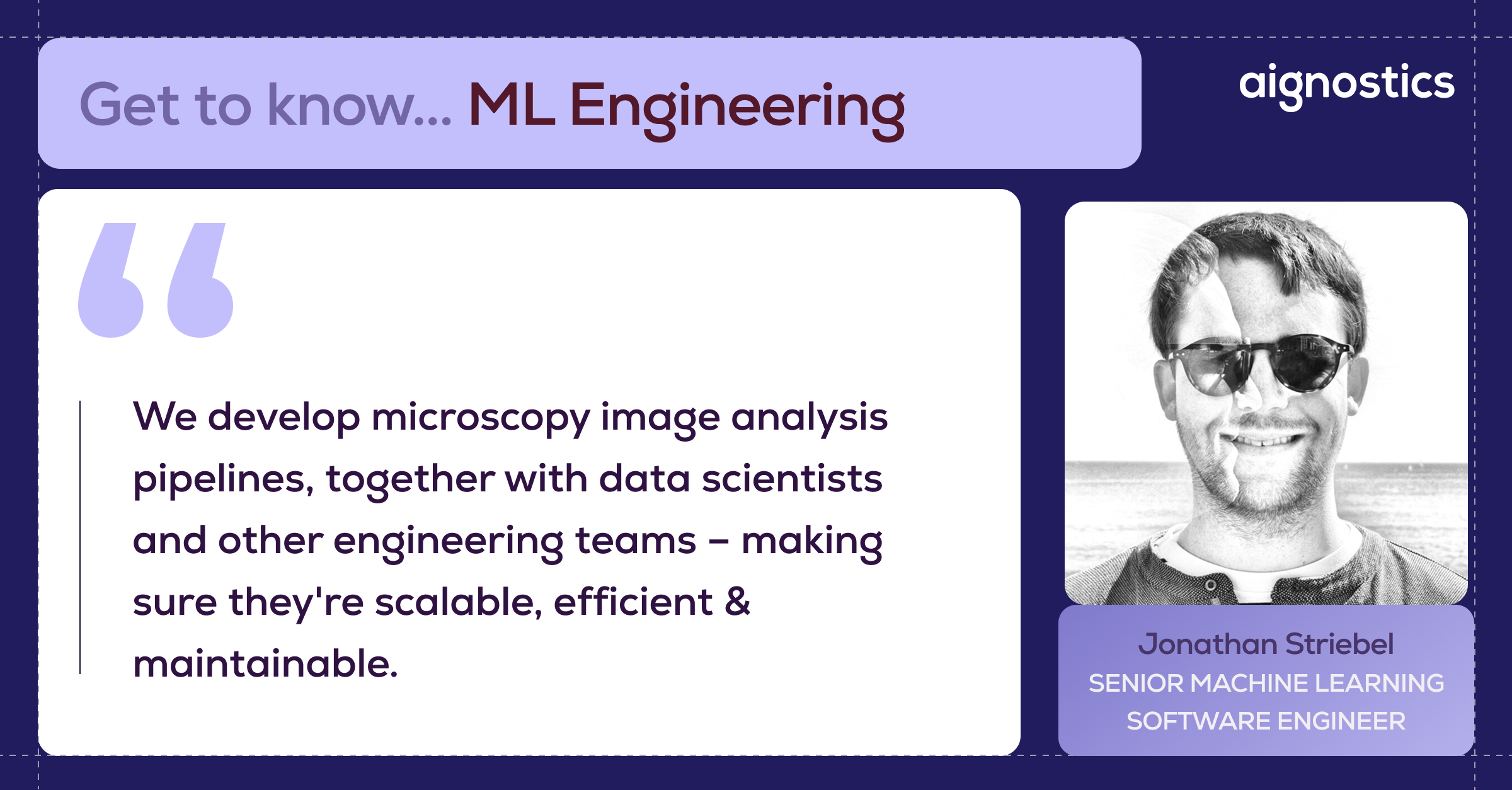
What are your main responsibilities? What does a typical week look like for you?
Our team is responsible for building batch processing pipelines with a focus on inference tasks. We develop microscopy image analysis pipelines together with data scientists, providing the infrastructure to run them—making sure they're scalable, efficient & maintainable. Our main priority at the moment is testing and scaling these pipelines for our upcoming Atlas H&E-TME product.
As the tech lead, I work with stakeholders to discuss requirements, define interfaces with other teams—particularly the platform API team since we sit behind the platform—design software architecture, plan implementations, and handle code reviews, testing, and releases. Occasionally, I also write code myself.
Aside from my day-to-day, I enjoy investing time in helping out my colleagues through teaching and mentoring – junior engineers as well as peers across the team and department. I’m a big advocate for optimizing the developer experience and I’m always looking for ways to improve our tooling.
I participate in knowledge sharing whenever I can, by giving internal talks on software engineering and organizing department offsites. Over the past few years, I’ve also frequently presented at Python conferences, which has been very rewarding. This year was particularly special as our company brought a whole team of 20 people to EuroPython. It was amazing!
What is a recent challenge that your team overcame that you're particularly proud of?
One improvement that we've made recently is putting in place better monitoring for Atlas H&E-TME. This allows us to have a better understanding of runtimes and costs. We've added internal metrics so we can have dashboards that visualize and show us the different costs in real time for customer runs and for internal benchmarking. This allows us to compare changes and make data-driven decisions for the product.
More broadly, reducing technical debt is something that I care about a lot to enable faster iteration on our products. We've made our codebase much more modular and reduced both internal and external dependencies, so we can upgrade easier. We've also improved the configurability of the software and implemented more structured benchmarking, so we can quickly test changes and see their impact on runtimes and analysis performance. I'm very happy that we have increased our velocity a lot in the last few years.
What is an impactful skill that you developed since joining the team that you did not expect?
For me, cross-functional stakeholder communication and management has become much more crucial than I’ve experienced before. I joined Aignostics from a much smaller company, so this kind of setup was new for me.
In terms of teams that I work with often, I collaborate a lot with product management to discuss current and future releases of Atlas H&E-TME. I also work with data science teams and the training teams within ML engineering to determine what kind of models we'll have in future iterations. And since we sit behind the platform API, I also coordinate with the backend platform API team and platform engineering for our compute infrastructure.
Through these collaborations and in my role as tech lead, I've significantly grown my ability to effectively manage stakeholder communications and expectations through increased face-to-face meetings and collaborative strategy and planning sessions.
What is your favorite part about working at Aignostics?
For me it's having a meaningful mission, so I know why I come to work. I also love having challenging computational problems where solutions are not always clear from the start and you have to navigate different trade-offs. Working on biological insights and image analysis in a great team is the perfect blend of meaningful and interesting work for me.
How would you describe your team in just three emojis?
🧑💻🤝🧑🔬
The first represents a large part of what we do since we're dealing with complex technical challenges and computational problems. Collaboration is key, so I choose the handshake as well. The third represents the data scientists and pathologists, it's awesome to work with them on scientific problems!
On a final note, I’d also like to mention that we are hiring! If working with our team sounds exciting for you, all of our open roles are listed at https://www.aignostics.com/company/careers#listing.

